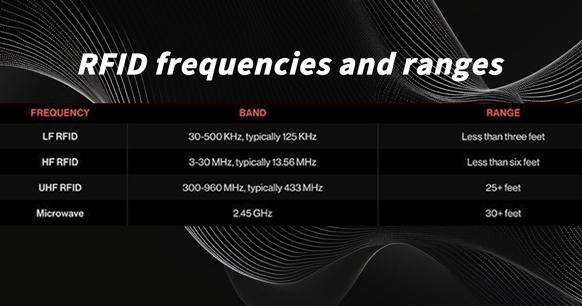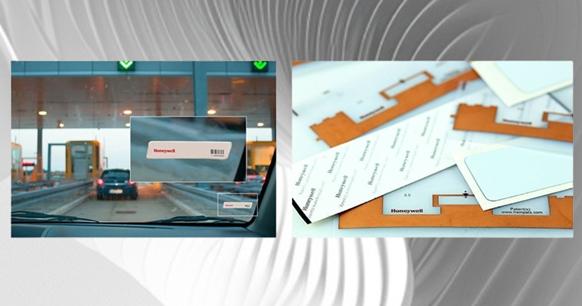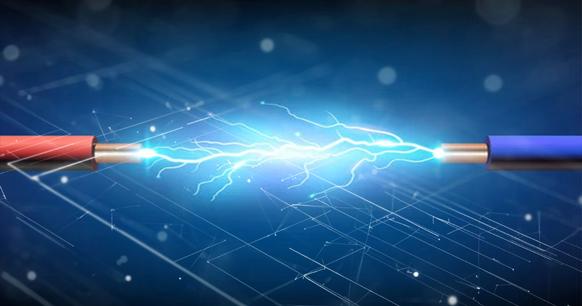
RFID: Technology, Applications, and Future Trends
What is RFID (radio frequency identification)?
RFID is short for radio frequency identification. It is a wireless communication method that employs electromagnetic or electrostatic coupling in the radio frequency portion of the electromagnetic spectrum. This technology is utilized for the identification of objects, animals, and individuals.
How does RFID work?
RFID systems are comprised of three essential components: a scanning antenna, a transceiver, and a transponder. The combination of the scanning antenna and transceiver forms an RFID reader or interrogator. There are two main categories of RFID readers: fixed readers and mobile readers.
The RFID reader is a network-connected device that can be portable or permanently attached. It uses radio waves to transmit signals that activate the tag. Once the tag is activated, it sends a wave back to the antenna, which translates it into data.
The transponder is in the RFID tag itself. Several factors determine the distance that RFID tags can be read. These factors include the type of tag, reader, frequency, and interference from other tags or readers in the area. Tags with a more robust power source are capable of a greater read range.
What are RFID tags and smart labels?
RFID tags are comprised of three main components: an integrated circuit (IC), an antenna, and a substrate. The RFID inlay is the component of an RFID tag that encodes the identifying information.
There are two principal categories of RFID tags:
· Active RFID. An active RFID tag is equipped with its own power source, often a battery.
· Passive RFID. A passive RFID tag is powered by the reading antenna. The electromagnetic wave generated by the antenna creates a current in the RFID tag antenna.
Additionally, semi-passive RFID tags utilise a battery-powered circuitry, with communication enabled by the RFID reader.
Low-power, embedded non-volatile memory is a crucial component in every RFID system. The typical capacity of an RFID tag is less than 2,000 KB, which includes a unique identifier or serial number. Tags can be read-only or read-write, allowing the reader to add data or overwrite existing data.
The read range for RFID tags is dependent on a number of factors, including the type of tag, the type of reader, the RFID frequency, and potential interference from the surrounding environment or other RFID tags and readers. Active RFID tags have a longer read range than passive RFID tags due to the stronger power source.

RFID readers can be fixed (left) or mobile (right).
What kinds of RFID systems exist?
Three primary kinds of RFID systems are present: low frequency (LF), high frequency (HF), and ultra-high frequency (UHF). There's also the availability of Microwave RFID. The frequencies differ significantly depending on the country and region.
· Low-frequency RFID systems. The frequencies vary between 30 KHz and 500 KHz, with 125 KHz being the most common. LF RFID's transmission distances are short, typically ranging from a few inches to under six feet.
· High-frequency RFID system These range from 3 MHz to 30 MHz, with the typical HF frequency being 13.56 MHz. The standard range is from a few inches to several feet.
· UHF RFID systems. They span from 300 MHz to 960 MHz, typically operating at 433 MHz, and can usually be detected from a distance exceeding 25 feet.
· Microwave RFID systems. These run at 2.45 Ghzand can be read from 30-plus feet away.
The frequency used depends on the RFID application, with actual obtained distances sometimes varying from expectations. The U.S. State Department announced that the new electronic passports have RFID chips.
These chips can only be read from a distance of about 4 inches. The State Department discovered that RFID readers can read information from RFID tags from a distance of over 4 inches. Sometimes, they can even read information from up to 33 feet away.
Should longer read ranges be required, the use of tags with additional power will enable the read range to be boosted to 300-plus feet.

Utilization and instances of RFID
RFID technology has its roots in the 1940s, but it wasn't until the 1970s that its use became more prevalent. The high price of tags and readers initially hindered its widespread commercial application. However, as the cost of hardware has fallen, the adoption of RFID has correspondingly risen.
RFID technology is commonly employed in the following areas:
· Tracking of pets and livestock
· Management of inventory
· Monitoring of assets and equipment
· Control of inventory
· Logistics of cargo and supply chain
· Vehicle tracking
· Customer service and loss prevention
· Enhanced visibility and distribution within the supply chain
· Access management in security scenarios
· Shipping
· Healthcare
· Manufacturing
· Retail sales
· tap-and-go credit card payments

Passive RFID tags do not require batteries. Battery-free tags in vehicles are used to facilitate toll collection on highways.
RFID vs. barcodes
The use of RFID as an alternative to barcodes is becoming more prevalent. RFID and barcode technologies are used in similar ways to track inventory, but there are some important differences between them.
|
RFID tags |
Barcodes |
|
Can identify individual objects without direct line of sight. |
Direct line of sight required for scanning. |
|
Can scan items from inches to feet away, depending on type of tag and reader. |
Require closer proximity for scanning. |
|
Data can be updated in real time. |
Data is read-only and can't be changed. |
|
Require a power source. |
No power source needed. |
|
Read time is less than 100 milliseconds per tag. |
Read time is half a second or more per tag. |
|
Contain a sensor attached to an antenna, often contained in a plastic cover and more costly than barcodes. |
Printed on the outside of an object and |
RFID vs. NFC
Near-field communication (NFC) enables data to be exchanged between devices by using short-range, high-frequency wireless communication technology. NFC combines the interface of a smart card and reader into a single device.
|
Radio frequency ID |
Near-field communication |
|
Uni-directional |
Bi-directional |
|
Range up to 100 m |
Range less than 0.2 m |
|
LF/HF/UHF/Microwave |
13.56 MHz |
|
Continuous sampling |
No continuous sampling |
|
Bit rate varies with frequency |
Up to 424 Kbps |
|
Power rate varies with frequency |
<15 milliamperes |
RFID challenges
RFID is prone to two main issues:
A further challenge is that of reader collision. Reader collision, defined as a situation where a signal from one RFID reader interferes with a second reader, can be effectively mitigated through the implementation of an anti-collision protocol. This approach allows RFID tags to take turns transmitting to their respective readers, ensuring seamless communication and preventing potential disruptions.
Another potential issue is tag collision. A tag collision occurs when an RFID reader is overwhelmed by the simultaneous transmission of data from multiple tags. Selecting a reader that gathers tag information one at a time will prevent this issue.
RFID security and privacy
People worry that anyone with a reader can access data from RFID tags. Tags can be read after leaving a store or supply chain.
Also, people can read these tags without the user knowing. A tag with a unique serial number can be linked to a consumer. This could be a problem for privacy, but in the military or medical settings it could affect national security and even life or death.
RFID tags can't handle encryption techniques like those used in challenge-response authentication systems. This does not apply to RFID tags in passports, which are used for access control. The chip can decode an encrypted token from the reader to verify it.
The reader scans the information on the passport to get a key for it. Three pieces of information are used: the passport number, the passport holder's birth date, and the passport's expiration date.
Passports are protected by a password with less entropy than is normally used in e-commerce. The key is also the same for the whole time the passport is valid. This means that once someone has the printed key information, they can read the passport without the passport holder's consent u
RFID standards
There are several guidelines and specifications for RFID technology, but the main standards organizations are:
The following standards organizations have established guidelines and specifications for radio frequency identification (RFID) technology:
• International Organization for Standardization (ISO)
• Electronics Product Code Global Incorporated (EPCglobal)
• International Electrotechnical Commission (IEC)
Each radio frequency has associated standards, including ISO 14223 and ISO/IEC 18000-2 for low-frequency (LF) RFID, ISO 15693 and ISO/IEC 14443 for high-frequency (HF) RFID, and ISO 18000-6C for ultra-high-frequency (UHF) RFID.
Next-generation RFID use
RFID systems are becoming an increasingly important component in the support of Internet of Things (IoT) deployments. The integration of RFID with smart sensors and/or GPS technology enables the wireless transmission of sensor data, including temperature, movement, and location.



